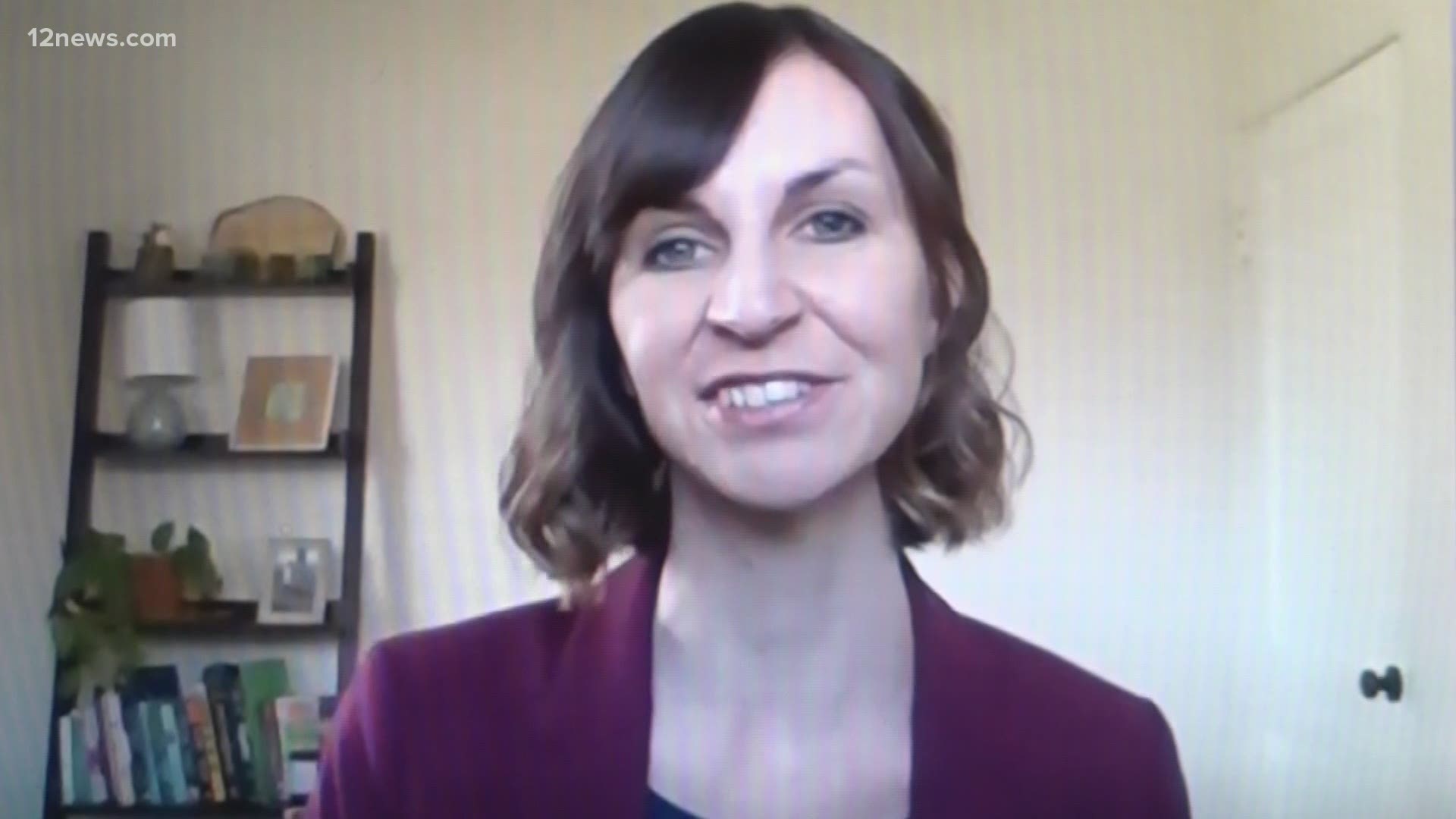ARIZONA, USA — This week marks one year since Governor Doug Ducey closed all Arizona public schools due to the COVID-19 crisis. Exactly one year later, the governor ordered most of the state’s K-12 schools to get back to in-person.
One year into the pandemic, Arizona Superintendent of Public Instruction and President of AEA weigh in
Arizona Superintendent of Public Instruction and the President of the Arizona Education Association talked about the challenges teachers and students are still facing as they get ready to re-enter classrooms and how far they've come in the year.
The decision to call for a statewide closure for all public schools was an extremely difficult decision when the pandemic was announced in Arizona.
“Honestly, it broke my heart,” said Arizona Superintendent of Public Instruction Kathy Hoffman. “I knew that we were doing what we needed to do for the safety and well-being of our educators, of our students, of our communities as a whole… at that time there was a lot of fear and angst and unknown.”
Superintendent Hoffman was with Gov. Ducey when they announced the closure.
"I was grateful for the opportunity to join him in that announcement, just so that we could show a unified front… that this was what we needed to do together on behalf of protecting our communities,” Hoffman said.
Statewide school closures turn into a year of challenges for teachers, students
No one could have anticipated the year-long rollercoaster of ups and downs that followed the initial announcement. Virtual learning presented plenty of problems, from teacher shortages, to a decline in enrollment and the digital divide of technology and access issues.
"That is a multilayered issue,” Hoffman said. “Everything from not having the infrastructure, especially in our rural communities to our many, many families and even teachers who do not have internet at home."
Success stories surfaced during the chaos
However, there were some success stories that came from the worry.
"I've even heard from teachers about students who traditionally were the most quiet, introverted students, who they said were now thriving in an online teaching and learning environment,” Hoffman said.
President of the Arizona Education Association Joe Thomas says the determination of teachers played a significant role during these unprecedented times. ‘
“Educators leaning into their dedication and their commitment to their students,” he said. “They became creative, they worked longer hours, the job became a lot harder… life became a lot harder for everyone."
A list of challenges remains as we look to the future
Looking ahead to the remainder of the current school year and the next, there are a list of challenges at the top of mind, as schools are now required to offer in-person learning.
"What educators are thinking about is: is the classroom safe, safe for them, safe for their students?" Thomas said. "We've had some federal funds that have come through, but our schools haven't even known if they've been able to have the protective equipment to give educators, masks, cleaning solutions."
Some of the top priorities include returning to the classroom safely, protecting the most vulnerable students and helping educators navigate their rights and responsibilities amidst the COVID-19 crisis.
"The people closest to the students… the classroom teachers, the instructional aids, the nurses, the school bus drivers, we need to be listening to them the most, because they can describe the conditions that are students are in," Thomas said.
Mental health and wellness could require support from counselors for years
Hoffman says focusing on the mental health of students and staff is key.
"Our students and educators, as well as our families have endured a lot of significant trauma this past year. It could be trauma from losing a loved one, it could trauma from losing a job, it could be trauma from just being isolated at home and not being able to see your friends or your teachers and having that stability in your life,” she said.
Hoffman even shared about her own experience with COVID-19. Her brother was one of the first to contract the virus.
“Thankfully, he made a quick and full recovery," she said.
And in the spring of 2020, she suffered a miscarriage.
"It was extremely emotionally taxing on us,” Hoffman said. “Especially since I had to go to the hospital alone, because of the COVID regulations."
The recovery from personal struggles and tragedies will require support from counselors and mental health experts not just now, but for years to come.
The COVID-19 vaccines will be the game changer
Despite lingering hurdles, Hoffman says vaccines have been a game changer. She says they’re seeing almost zero transmission within the school communities, proving hope lies ahead.
"We've come a long way over the past year and so I am feeling much more hopeful and positive looking ahead," she said.
With the state of education as it stands right now and looking ahead to a lot of unknowns that remain, it's important to remember the CDC's five key COVID-19 mitigation strategies:
- Universal wearing of masks
- Physical distancing
- Washing hands
- Cleaning and improving school ventilation
- Contact tracing
For full coverage on COVID-19 in schools, subscribe to the 12 News YouTube channel.

